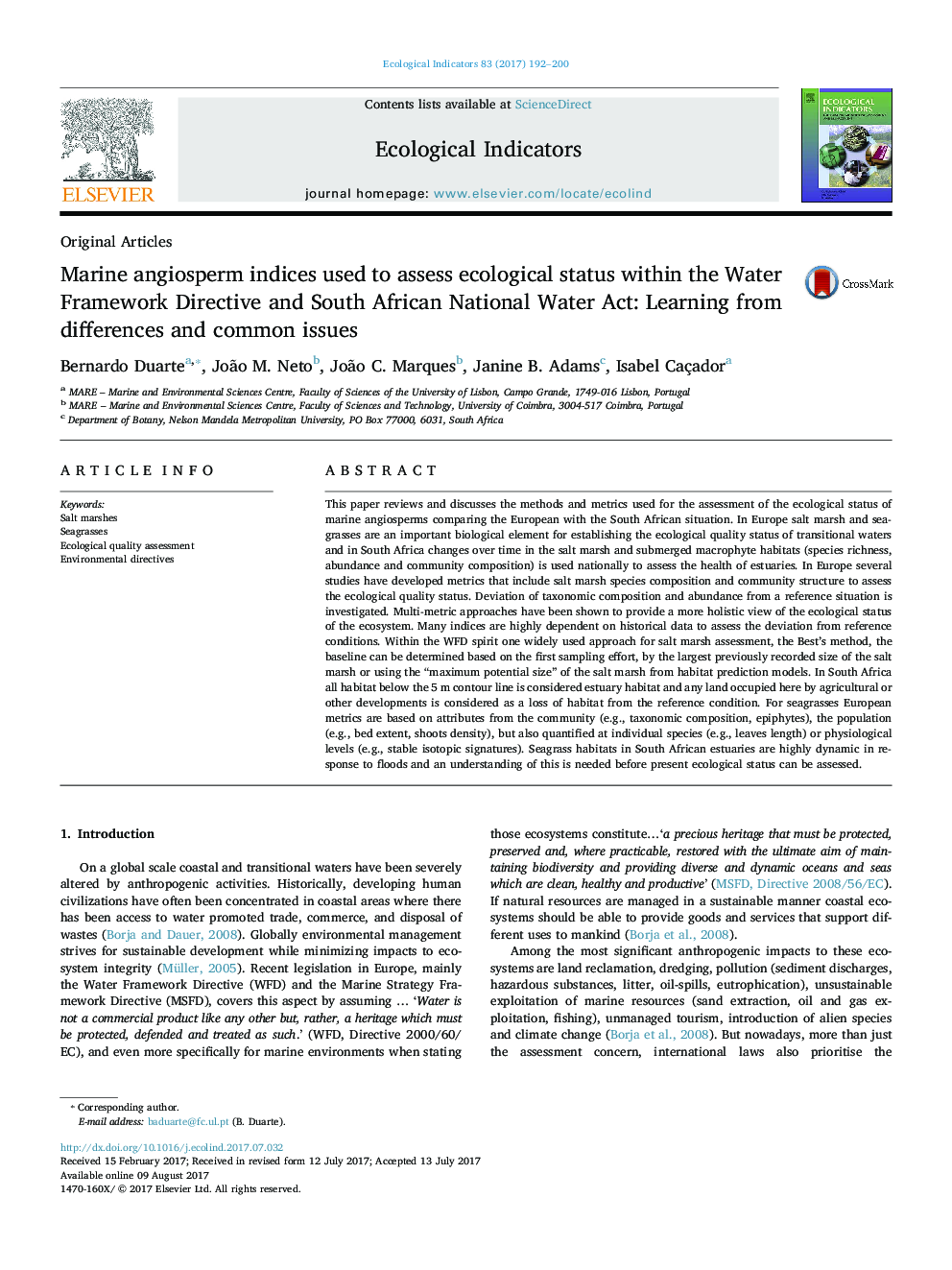| Article ID | Journal | Published Year | Pages | File Type |
|---|---|---|---|---|
| 5741490 | Ecological Indicators | 2017 | 9 Pages |
This paper reviews and discusses the methods and metrics used for the assessment of the ecological status of marine angiosperms comparing the European with the South African situation. In Europe salt marsh and seagrasses are an important biological element for establishing the ecological quality status of transitional waters and in South Africa changes over time in the salt marsh and submerged macrophyte habitats (species richness, abundance and community composition) is used nationally to assess the health of estuaries. In Europe several studies have developed metrics that include salt marsh species composition and community structure to assess the ecological quality status. Deviation of taxonomic composition and abundance from a reference situation is investigated. Multi-metric approaches have been shown to provide a more holistic view of the ecological status of the ecosystem. Many indices are highly dependent on historical data to assess the deviation from reference conditions. Within the WFD spirit one widely used approach for salt marsh assessment, the Best's method, the baseline can be determined based on the first sampling effort, by the largest previously recorded size of the salt marsh or using the “maximum potential size” of the salt marsh from habitat prediction models. In South Africa all habitat below the 5Â m contour line is considered estuary habitat and any land occupied here by agricultural or other developments is considered as a loss of habitat from the reference condition. For seagrasses European metrics are based on attributes from the community (e.g., taxonomic composition, epiphytes), the population (e.g., bed extent, shoots density), but also quantified at individual species (e.g., leaves length) or physiological levels (e.g., stable isotopic signatures). Seagrass habitats in South African estuaries are highly dynamic in response to floods and an understanding of this is needed before present ecological status can be assessed.
